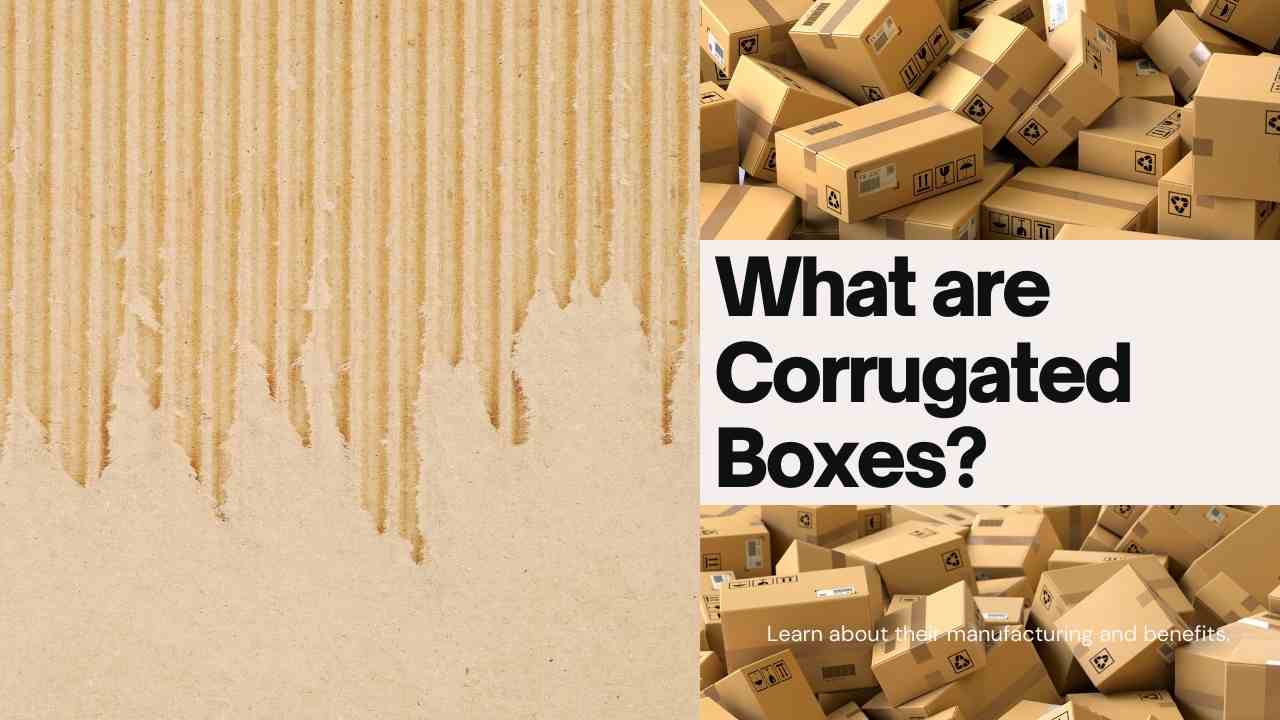Blog
-
Read more »
What Are Corrugated Boxes?

Corrugated Boxes are an integral part of every packaging Product
Corrugated boxes are everywhere. You may have them in your home, Office, Kitchen, or car and not even you realize it. The pizza, Dosa you receive comes in a corrugated box. An estimated 80% of all products in the World are shipped in corrugated boxes. They are found in abundance in grocery stores, in electrical product stores in Pin to plane everything we buy and need some type of safety is finally shipped -
Read more »
Understanding the Differences: Cardboard, Corrugated, and Rigid Packaging

In the realm of packaging, the choices can be overwhelming. When it comes to shipping products, selecting the appropriate type of packaging is crucial. Cardboard, corrugated, and rigid packaging are three fundamental options often encountered in the business landscape. However, despite their commonality as paper-based packaging materials, each serves distinct purposes and possesses unique characteristics. Let's delve into their differences and applications.
Cardboard Packaging
-
Posted: November 11, 2020Categories: Printing MethodsTags: screen printing & digital printing, flexo graphic, different printing methods for packaging... offset printingViews: 9Read more »
Exploring Different Printing Methods for Packaging
In the realm of packaging, printing plays a crucial role in not only protecting the product but also in enhancing its appeal to consumers. Whether it's a luxurious cosmetic item or a humble online purchase, packaging serves as the first point of contact between the brand and the customer. To meet the diverse demands of packaging, printing companies employ various techniques, each with its unique features and advantages. Let's delve into the four primary printing methods used for packaging: Offset Printing, Flexographic Printing, Screen Printing, and Digital Printing.
Offset Printing:
Offset printing, also known as lithography, is a traditional yet highly versatile printing method widely used in packaging. The process involves transferring an image from a computer onto a plate cylinder or blank cylinder using a laser beam. The inked image is then transferred onto a rubber blanket and then onto the packaging material, typically paper or cardboard.
Offset printing offers durability and versatility, making it suitable for various paper stocks. It boasts high productivity, with large-capacity machines capable of processing thousands of impressions per hour. However, the initial setup cost can be high, particularly for intricate projects.
Flexographic Printing:
Flexographic printing, or flexo, utilizes flexible relief plates made of rubber or plastic to transfer images onto packaging materials. It is particularly suitable for printing on a wide range of substrates, including paper, plastic, metallic film, and non-porous materials like those used in food packaging.
Flexo printing is known for its fast-drying ink and ability to cover large areas of color efficiently. It is commonly used for packaging items such as corrugated boxes, folding cartons, plastic bags, and food wrappers.
Screen Printing:
Screen printing is a cost-effective option, ideal for small-quantity printing requirements. While it offers limited color options compared to other methods, it remains a viable choice for startups and small businesses. Screen printing involves pushing ink through a stencil onto the packaging material using a mesh screen, resulting in a vibrant and tactile print.
Despite its limitations, screen printing allows for customization and is often chosen for its handmade aesthetic. However, it may involve some inaccuracies in placement due to its manual process.
Digital Printing:
Digital printing has emerged as one of the fastest-growing segments in the packaging industry. It offers unparalleled versatility, precision, and cost-effectiveness, making it accessible to both large corporations and small businesses. Digital printing involves transferring a digital image directly onto the packaging material using inkjet or laser printers.
One of the significant advantages of digital printing is its ability to personalize prints on-demand, catering to individual preferences and marketing strategies. It eliminates the need for plates, reducing setup costs and enabling quick turnaround times. Moreover, digital printing excels in photographic and fine art printing, allowing for high-quality, customizable designs.
In conclusion, the choice of printing method for packaging depends on various factors such as budget, quantity, substrate, and design requirements. Whether it's the timeless elegance of offset printing, the versatility of flexography, the affordability of screen printing, or the precision of digital printing, each method contributes to creating visually appealing and functional packaging solutions that capture the essence of the brand and resonate with consumers.
-
Posted: December 30, 2019Views: 6Read more »
Act As If You Are Going Into The Office.
Working from home once in a while is a luxury and most people are excited by the prospect, however here we are presented with the reality of working from home being imposed upon us as a full time obligation.
That doesn’t mean you need to break your usual routine, yes you might have some more time in bed as a result of a reduction in your commute.
But it is important to get up, get ready for work and set up a space that you can work from comfortably and hopefully ergonomically.
That means, not setting up shop in your bed or from your sofa, but actually sitting at a table to ensure you have good posture.
Have a Healthy To Do List
Structure your day, when you are working from home you have to be your own manager and therefore you have to manage your productivity (and potentially those in your team if you have to manage others).Think Like An E